Menu
You can manage your membership and billing method by clicking here
Terms of Service
Privacy Policy
Copyright © 2024 Office of Immigration Australia, a private company registered in Australia. All Rights Reserved.

Checking membership status...
 EXCLUSIVE MEMBERS ONLY ACCESS
EXCLUSIVE MEMBERS ONLY ACCESSTo access this month’s edition & Member’s only resources, enter your registered email address.



Exclusive Australian Immigration News, Updates & Opportunities
July 2023
This bulletin is for members only, and provides our members with month to month updates on Australian immigration policy changes and consequential opportunities. Opportunities are found via federal and state government policy shifts for the demand and supply for certain occupations.
This bulletin will keep you up to date so that you do not have to employ expensive immigration lawyers to provide you with monthly research.
July 2023 has arrived and Australia’s population has skyrocketed to 26.3 million, growing at an impressive rate of 1.9% and adding 1,361 migrants daily!
This is excellent news as Australian businesses continue to cry out for skilled workers with the situation becoming particularly dire, and immigration now being seen as the key to Australia avoiding a recession!
As a response the Australian government has promised that the visa process for highly skilled foreigners will be made increasingly easier and quicker!
Also in this month’s bulletin, it is now apparent that Australia’s immigration program is evolving, and many factors, including economic conditions, global geopolitics, COVID-19 and the growth of different industries, have influenced the changes.
Australia is now gearing up for a continued huge unprecedented level of migration which is set to break all records!
In this month’s ‘Federal News‘, the Australian Minister for Home Affairs, Clare O’Neil, highlighted that changes are coming to Australia’s skilled migration program. The proposal is to modernize Australia’s immigration system, putting every visa category up for a change in an attempt to accelerate getting highly skilled workers into the country and easing the path to permanent residency!
In other federal news, starting from 1st of July, the Australian government has said that it would increase the migrant wage threshold for temporary skilled workers from A$53,900 to A$70,000. Such a decision was taken since about 90 percent of full-time jobs in Australia are paid more than the current threshold.
In this month’s ‘State News’, skilled workers residing offshore remain eligible to be considered for ALL State and Territory nominations! Please view the State Migration Section of this month’s bulletin for all State and Territory program updates and opportunities available!
In this month’s ‘Economic News’, economists believe immigration to be the key to Australia avoiding a recession, as recently published data has revealed that the Australian labour market has continued to buck the economic blues by adding 76,000 jobs in May!
Also in this month’s economic news, we take a closer look at the beautiful South Australian region of Mount Gambier, as this place has been one of the most highly sought-after destinations for migration in the last few years!
In this month’s ‘Student News’, the Australian government is looking to enact wide-ranging changes this academic year to put a stop to unscrupulous agent behaviour and non-genuine students switching courses! Also in this month’s student news, we discuss 10 degrees that’ll make you financially stable in 10 years!
All this and much more in the July issue of The Australian Immigration Bulletin! Let’s take a deeper look at what has happened so far and what is planned for the remainder of July 2023 in Australian Immigration, so that you can start planning!
In case you missed it…
We are excited to announce a new benefit now available which allows all our member’s FREE access to an online platform and course to practice, study and improve their English and IELTS score. The IELTS exam is one of the key recommended exams you will need to take in order to Apply for Skilled Migration to Australia and the better your results, the higher points you will get when submitting an expression of interest. The advanced English and IELTS platform will allow all members to practice Mock IELTS Exams, learn cutting edge tips and gain a greater understanding of how to achieve a Band 7+.
We are also excited to announce “ImmiConnect” which is now available in the member’s area. ImmiConnect is the Office of Immigration Australia’s Employer Sponsored program which allows overseas workers to receive job interview invitations from Australian employers, when job opportunities come available.
The program aims to bring globally mobile, highly-skilled and specialised individuals to Australia who can fill critical areas of need.
ImmiConnect is exclusive to active Australian Immigration Bulletin Members only. You must be a current Australian Immigration Bulletin Member to be eligible to receive job interview invitations.
So if you are interested in receiving these invitations, please sign up for FREE by Clicking “ImmiConnect” and adding your name and email address.

*2 WINNERS DRAWN every month. May 2023 – September 2023. (10 winners/prizes in total)
There is always a winner, and the next one could be you!
The winners of the July 2023 Immigration Prize Giveaway were drawn at 10am AEST on 1st July 2023.

Congratulations to the July 2023 winners! You have been sent a confirmation email with details on how to claim your prize!
The next 2 lucky winners will be drawn at 10am AEST on 1st August 2023.
As of 6th July 2022, people entering Australia do NOT need to provide evidence of Covid-19 vaccination status. Additionally, people leaving Australia will NOT be asked to provide evidence of their vaccination status. Unvaccinated visa holders do NOT need a travel exemption to travel to Australia. It is however important to remember that airlines, vessel operators and other countries may have specific requirements that travellers need to comply with.
Please see the list of vaccines that are recognised by the Australian government for travel purposes here.
This Bulletin and its contents is for general information purposes only and should not be used as a substitute for consultation with professional advisors.
As legislation and travel requirements are constantly changing, we strongly recommend obtaining advice on your individual situation from a Registered Migration Agent.
Please click here to book a consultation with one of our Registered Australian Migration Agents, located in Australia.
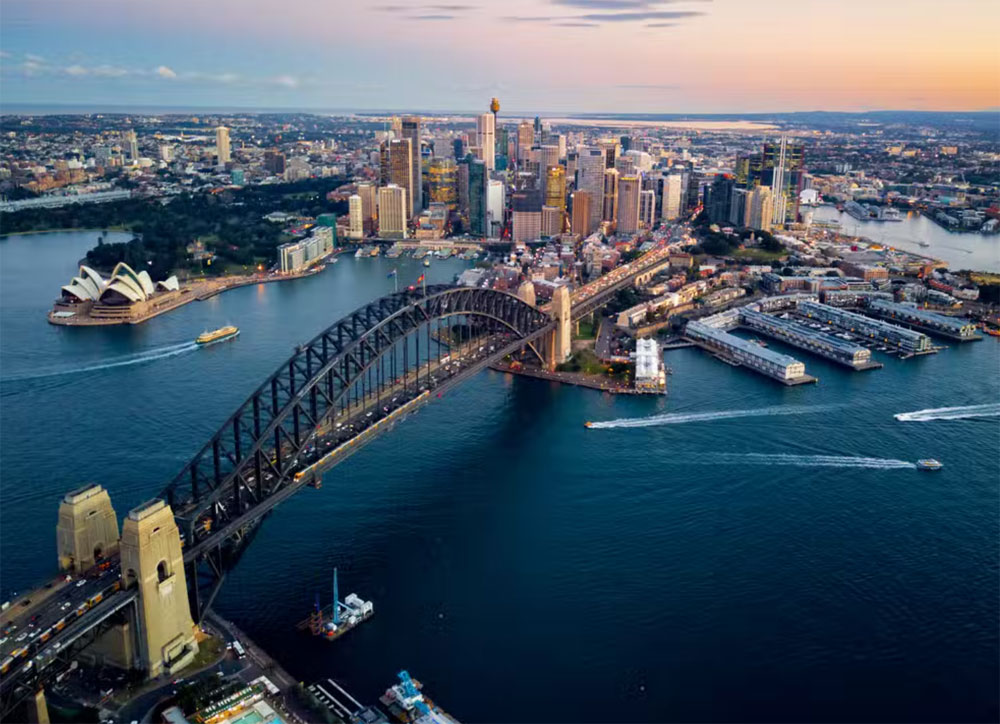
Sydney, New South Wales
The Results of the August 2021 census were made public on 12th July 2022, and revealed that Australia has become a majority migrant nation, as the census data shows for the first time that more than 50 per cent of residents were born overseas or have an immigrant parent. Last year’s census counted nearly 25.5 million people, including 1 million new residents.
Australia’s 2022-23 Migration Program has been carefully designed to boost the social and economic outcomes that meet Australia’s needs. In fact, the migration programme was first launched in 1945 following the aftermath of World War 2. Given this long history, it is worth understanding how it works. The Australian Immigration Bulletin exists to help explain this in more detail.
As we’ve entered the 7th month of the year, join us for a look at the latest news and developments in the world of Australian Immigration!
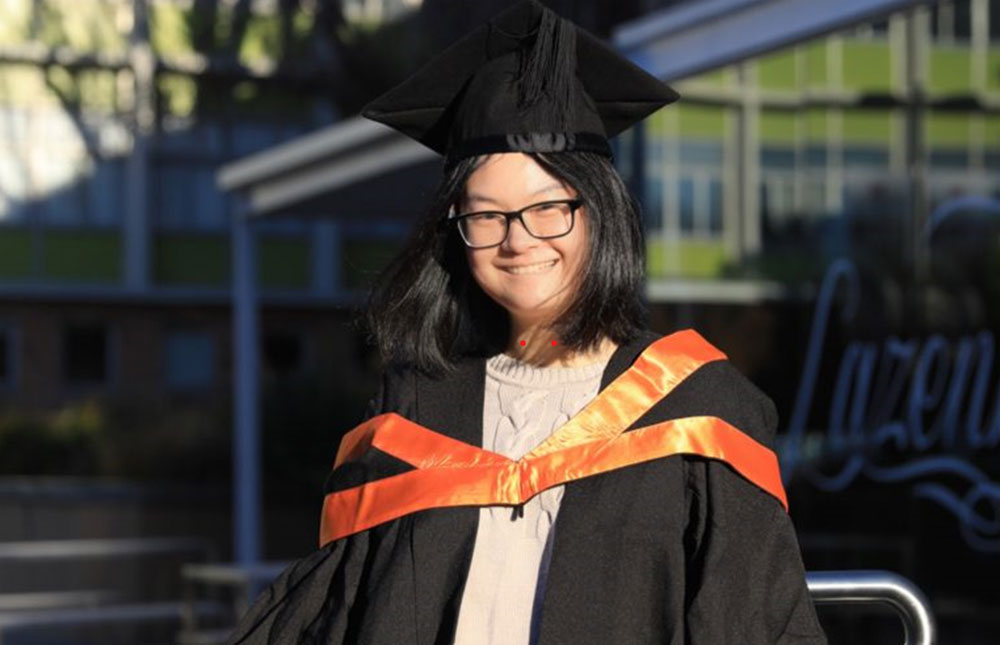
Kelly got her first job in her skill background, which was accounting, but without even an interview! How could she get it? Here is Kelly’s story.
“My story was not a typical one. Because my employer is my best friend’s ex-boyfriend. Well, I knew him for a long time when he was still with my friend. After they broke up, we still kept in touch.
2 years ago, he planned to open his own company in Tasmania and he was looking for an accountant. He searched all his friends who studied accounting and thought of me. I received his phone call asking: ‘would you want a job?’
I said ‘yes, why not?’
Then I was offered a job without preparing my CV or attending an interview. It happened just like a dream. At that time, I was still in my last year of Bachelor of accounting at the University of Tasmania.
“It is a start-up company and my job is a part-time accountant with 10-15 hours per week. Actually, I also work as the reception, administration and communicator. The job is quite challenging because I have no experience and have to learn everything by myself. I have learnt a lot from experience but am still worried for every task.”
After 2 years of working, now it comes to her first time of preparing a CV and cover letter. She is looking for a full-time job as an accountant and with a bigger company.
I now attend Career Coaching sessions. Before having my first session I had prepared a CV with 5-6 pages. But volunteer David helped me shorten it into 2 pages with more specific details in my area. I also learned some interview skills from this program. Now I am quite positive with my job hunting.”
Kelly’s advice for those who are still looking for a job:
“Networking is quite important. You never know whether your next employer could be your friend’s EX!”

Australia’s population swelled by a record 497,000 through 2022, driven by the nation’s single largest annual intake of migrants, even as COVID-19 infections lifted the number of deaths and weighed on natural growth.
Figures from the Australian Bureau of Statistics this month revealed a net 387,400 migrants made their way into the country last year.
Almost 620,000 people arrived, while 232,600 departed.
Of the net migrant intake, 134,600 moved into NSW, with another 120,500 taking up residence in Victoria, 58,000 in Queensland and the remaining 74,300 in other states and territories.
The population grew by 1.9 per cent, with the nation’s population now at 26.3 million.
The bureau’s head of demography, Beidar Cho, said the closure of the border to deal with COVID-19 was the key driver of the large population increase.
The government has revealed in the May budget that the nation is expecting 1.5 million net migrants to call Australia home over the next five years.
While net overseas migration surged, the natural increase in the population – births minus deaths – fell by 23.4 per cent on the December quarter of 2021.
In NSW alone, there was a 2500 drop in the natural increase while there was a 38 per cent fall in Western Australia. Victoria defied the trend with a 15 per cent lift.
The biggest increase in deaths in percentage terms occurred in the ACT, up by 16.2 per cent in 2022 compared to the previous year. By number, deaths were highest in NSW, where they jumped by 6533 (11.6 per cent), followed by Victoria (4949) and Queensland (4314).
Cho said COVID-related mortality was the main contributor to both the lift in deaths and the overall fall in the nation’s natural increase in population.
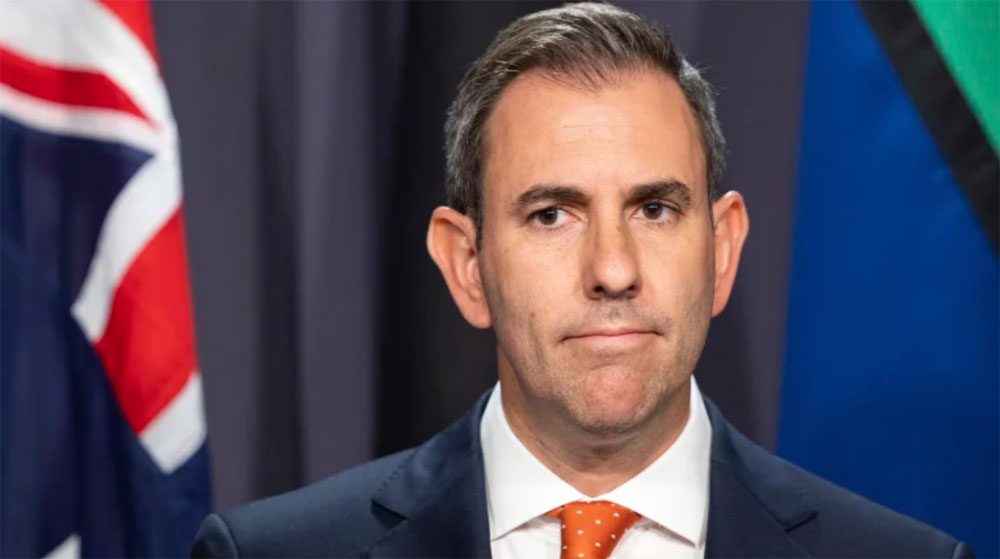
Australia has proposed to rewrite its immigration system, putting every visa category up for a change in an attempt to accelerate getting highly skilled workers into the country and easing the path to permanent residency.
Announcing the news, the federal labor government said that among the changes will be the immediate lift to the minimum wage threshold for skilled workers that has been frozen for ten years.
Similar to Canada, Germany and some other countries, Australia has also been competing to attract more skilled migrants as the country’s population continues to age.
The Australian government has already said that the visa process for highly skilled foreigners will be made easier and quicker. The government also said that they plan on taking steps to retain international students.
Starting from July 1, the Australian government said that it would increase the migrant wage threshold for temporary skilled workers from A$53,900 to A$70,000. Such a decision was taken since about 90 percent of full-time jobs in Australia are paid more than the current threshold.
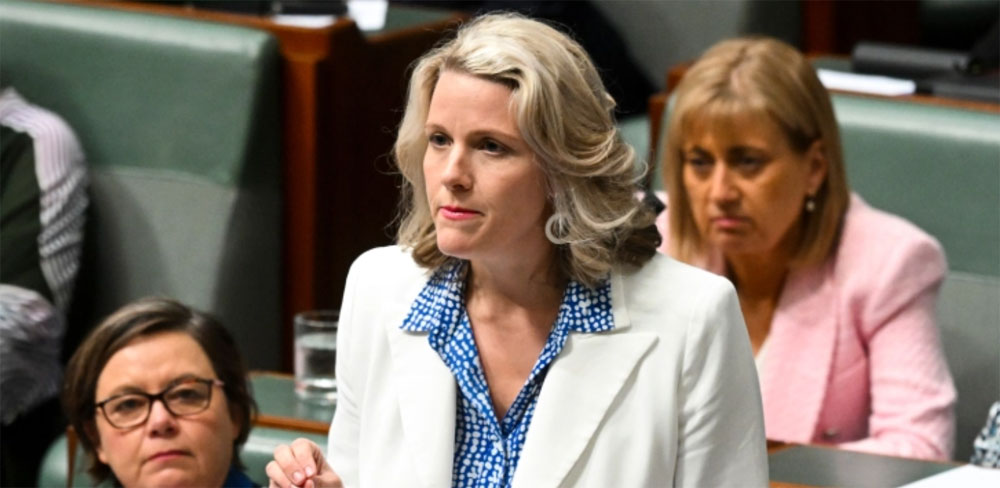
In May, the Australian Minister for Home Affairs, Clare O’Neil, highlighted that changes are coming to Australia’s skilled migration program. Australia’s immigration program is evolving, and many factors, including economic conditions, global geopolitics, COVID-19 and the growth of different industries, have influenced the changes. This article aims to address the changes to the Skilled Migration Program, and provide an overview of the program and insights into navigating the changes for employers and visa applicants.
Introduction to changes in Australia’s skilled migrant program
Changes to the skilled migration program are not new. The program is evolving, dynamic and ongoing changes are required to ensure that they meet the needs of the global and local environment, catering to economic conditions, global geopolitics and events such as COVID-19. Reviews and changes take place roughly every five years and changes can be significant, such as when the previous government cut the subclass 457 program and reduced the number of visa classes.
Australia’s current migration system has become increasingly intricate, which poses a risk of losing Australia’s competitive advantage in the global talent market. With complicated regulations, and various requirements, the system has become unnecessarily convoluted. While some of these measures may be necessary in some instances, they are not universally applicable.
What are some of the changes?
Employers are currently obligated to advertise a vacant position for at least 28 days. However, some employers find this requirement ineffective in identifying genuine skill shortages. An independent body called Jobs and Skills Australia is being established to address the issue. This body will advise on an approved occupation list catering to the labour market, and workforce training needs as they change. It will eliminate the need for labour market testing, which many employers find cumbersome, especially in industries where chronic skill shortages are well documented. It will also help sponsored workers move more easily between employers, providing greater flexibility.
Skills Australia’s levy, also referred to as a trading surcharge, will now be pro-rated monthly rather than requiring an upfront payment. It’s a significant win for small regional businesses, as paying up to $10,000 upfront for salary and department fees can significantly impact cash flow. Additionally, the refund provisions for refused applications have been limited in the past, with applicants risking losing their total $7,200 fee. This is not only a positive change for cashflow, but also for common sense.
The government has also indicated it will provide clearer pathways to permanent residency for 482 visa holders on the short-term occupation list. The current program has supported a significant population of long-term temporary migrants without a clear pathway to permanent residency, including workers on 457 or 482 student visas. The government’s plan to clear out the backlog and provide pathways to permanent residency is excellent.
Restoring the Working Holiday Maker program to a single working holiday (rather than the current three) and returning to the original intent of “cultural enrichment” for that visa is a positive step. The government will also look at how to best open up pathways to permanent residency.
The review also recommends extending the 60-day period for 482 visa holders to find a new sponsor to six months, allowing for greater flexibility and opportunities to find another employer. It should increase compliance and give workers enough time to find another job if needed.
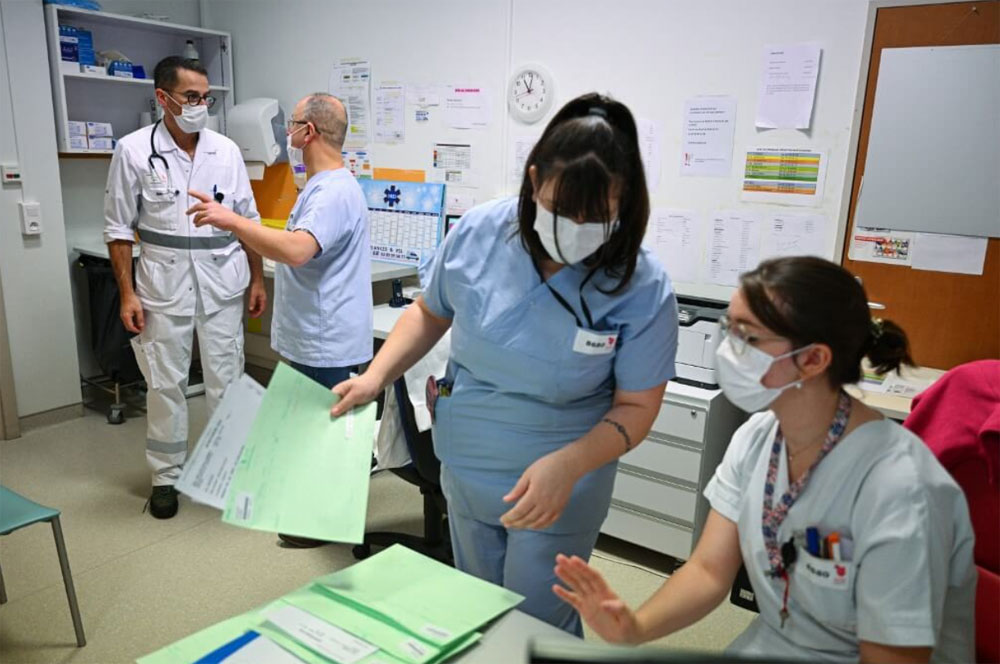
Australian businesses are crying out for skilled workers and the situation has become particularly dire since COVID-19, with a backlog of applications, and now the government is scrambling to fix it.
A major review of the visa system, which is considered overly complex and in much need of an overhaul, was tasked with identifying reforms that would increase economic productivity, address our ageing population problem, and make Australia a desirable destination for highly skilled migrants.
Led by former public service chief Martin Parkinson, the review recommends reducing red tape and ending some labour market testing rules.
But where and how did the backbone of Australia’s modern workforce go so wrong? And what can be done to get the skilled workers that Australia desperately needs?
Australia is considered one of the world’s key English-speaking countries for immigration, along with Canada, New Zealand and the US, with skilled migrants a key driver of economic growth.
We have had a history of opening up our labour market to migrants, but Australia’s policy was shaped in earnest after World War II when it accepted 2 million migrants in the 20 years to 1965.
During that time, migrants played a huge role in the country’s ability to undertake major infrastructure projects such as the Snowy Mountains Hydroelectric Scheme.
While Australia’s migration policy began as a labour-based scheme that prioritised able-bodied unskilled workers, under the Fraser government in the 1970s Australia became more selective about the skills it wanted from migrants – as well as being more objective in its selection process, rather than being based on ethnicity, for example – by introducing a “points test”.
How does the current visa system work?
Skilled workers (or prospective skilled workers) can apply to enter Australia through either the temporary or permanent visa programs.
The main ways to enter Australia temporarily are as a tourist without work rights; as a working holidaymaker; as a student; or as a skilled worker who is sponsored by an employer (who can’t find someone local with the skills they require).
Migrants who have skills or qualifications that the Australian economy needs can also apply directly for a permanent visa through the “skill stream”.
Their application could be approved if, for example, an employer agrees to sponsor them, or they pledge to invest a certain amount of money into business innovation, or they pass the points system and their occupation is on the government list.
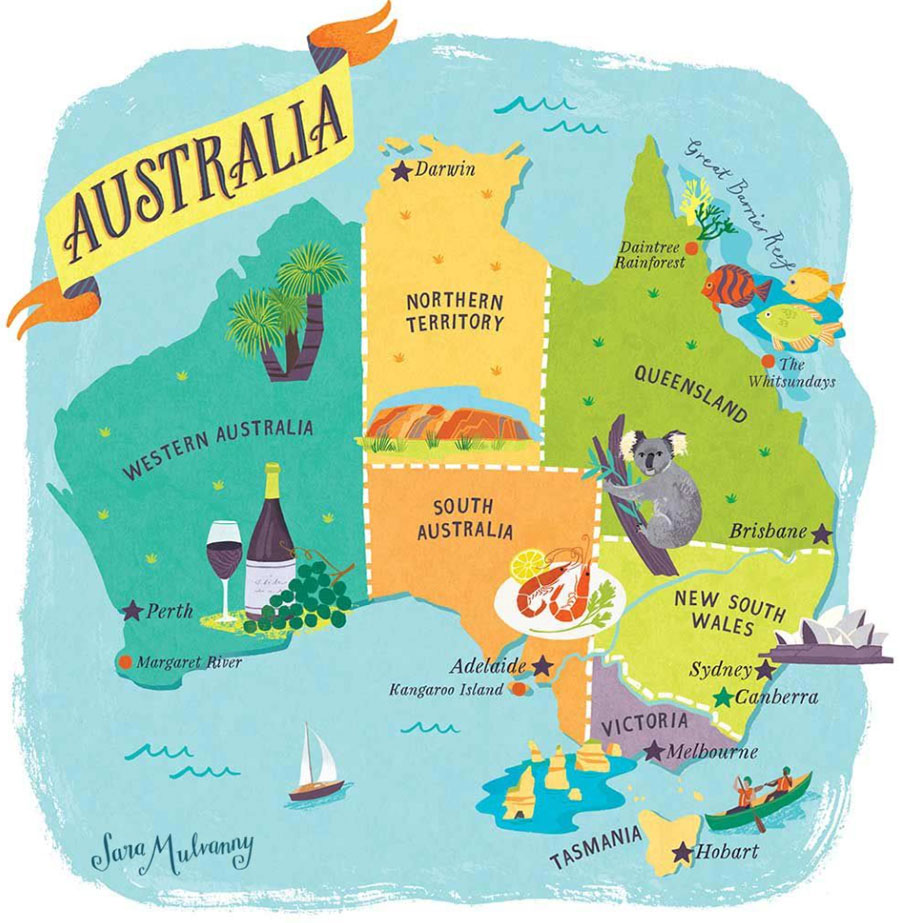
If you are interested in applying for a general skilled migration visa to Australia, it is important to have a good understanding of the skilled visa options and how the migration points test works, so that you can maximize your chances of being eligible to apply for a skilled visa.
A general skilled migration visa is an option available to skilled workers who are seeking to qualify for a skilled visa independently, or under a state or family sponsorship. It is an alternative to an employer sponsored visa.
One of the key criteria to qualify for a general skilled migration visa is the points test (a criterion that does not apply to employer sponsored visas). This is often the most challenging aspect for prospective skilled visa applicants to overcome when seeking an invitation to apply for the relevant skilled visa.
If you are considering applying for a general skilled migration program visa, an important concept to understand is the Expression Of Interest (EOI).
If you are considering applying for a general skilled migration visa, it is important to be aware that for certain visas in this visa class, you will first be required to lodge an EOI with the Department of Home Affairs (the Department) through Skill Select. The EOI is not a visa application, but rather, it is the process by which you can express your interest in applying for the relevant skilled visa (It’s important to note, that there is NO fee to submit an EOI).
This requirement applies to the following skilled visa subclasses:
Let’s take a brief look at each of these visas below:
The ‘subclass 189’ is a federal sponsored visa that grants automatic permanent residence in Australia. It is subject to nil visa conditions or obligations. For this reason, it is often considered to be the most flexible of the skilled visa options available.
A subclass 189 points-based visa allows you to live and work in any state or territory permanently.
The ‘subclass 190’ is a state/ territory sponsored permanent residence visa. It is another points-based visa for which invitations are issued throughout each month by individual states and territories. One of the benefits of applying for state nomination is that you will be granted an additional 5 points.
An important aspect to consider, which does not apply to the subclass 189 visa is that there is an added step in the application process. In this case, you must also apply for nomination approval to a state or territory government. Only upon receipt of an invitation from the relevant state or territory to which you apply can you then apply to the Department for the visa itself.
Your obligations as a subclass 190 visa holder are that you must commit to your nominating jurisdiction’s obligations and commit to residing in your nominating State or Territory for two years from visa grant.
The ‘subclass 491’ is also a points-based state/ territory (or family) sponsored visa. It is a regional visa with a term of five years. The Department issues invitations for family sponsored EOI applications only (in invitation rounds). Invitations for state sponsorship are issued by individual states and territories throughout each month. This will grant you an additional 15 points for the nomination.
Being a provisional visa, this means it provides a pathway to permanent residence in Australia with the Subclass 191 Permanent Residence (Skilled Regional) visa, subject to meeting specified requirements.
Be mindful that as a subclass 491 visa holder, you must abide by visa condition 8579, which requires you to live, work and study in a designated regional area of Australia. For migration purposes, most locations of Australia outside of major cities (Sydney, Melbourne, Brisbane, Perth, etc.) are classed as regional areas.
If your EOI is successful, you will receive an invitation to apply for the visa, as specified in the invitation letter. This then enables you to proceed with lodgment of your visa application (provided you meet all other visa lodgment and visa grant requirements).
Please note, the below State and Territory program updates is a general overview only. It does not take into account any of your personal circumstances. You must check the State/Territory information carefully to ensure you can meet all the requirements for nomination.
Australia is currently facing a shortage of skilled migrants to fill workforce demands. In response, states and territories have been easing the conditions of their visa programs to help attract skilled workers from overseas.
Below is the monthly update for some of the State and Territory opportunities available.
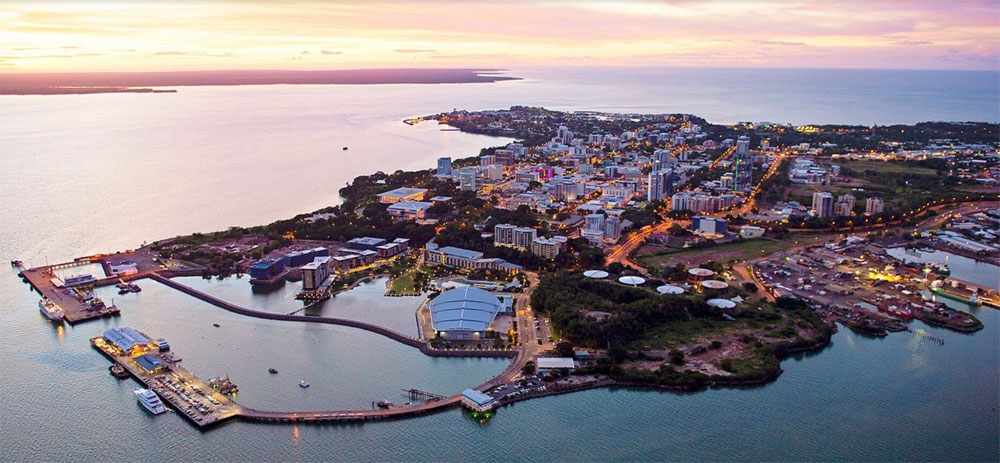
Program Status Update
People residing offshore are now eligible to be considered for Northern Territory (NT) nomination. Invitations to apply for Northern Territory nomination will be via the ranking system.
The ‘Northern Territory Offshore Migration Occupation List’ identifies the occupations in current demand in the Northern Territory. This List is important if you want to apply for Northern Territory nomination for either a:
The ‘Northern Territory Offshore Migration Occupation List’ is only applicable for those applying for NT nomination from outside Australia, under the Priority Occupation stream.
Please note: The Northern Territory government has advised that offshore applicants will generally only be offered a Northern Territory nomination for a subclass 491 visa. Subclass 190 nominations will only be offered in exceptional circumstances, such as cases where the applicant has strong connections to the NT.
The NT advises eligible applicants to apply as soon as they meet the eligibility criteria. To receive a nomination from the NT Government, you must:
Before submitting an EOI for The Northern Territory, applicants should check that they meet all eligibility requirements.
For a further explanation, see the Frequently Asked Questions page on the Northern Territory Government website.
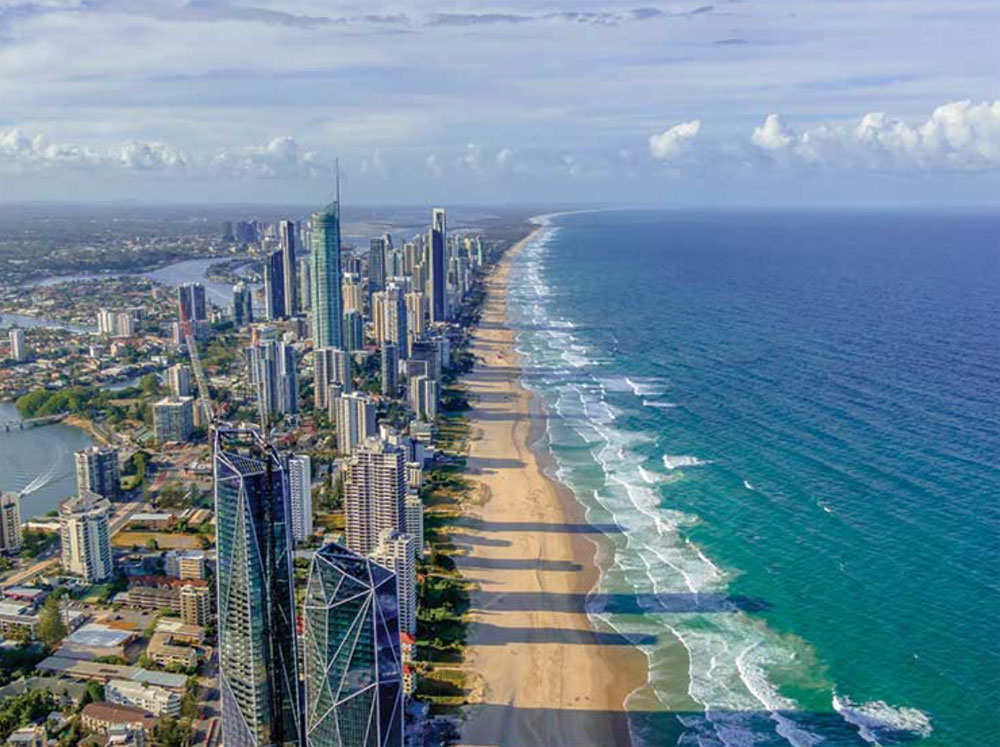
Program Status Update
To manage Queensland’s COVID recovery response, applicants currently residing offshore are now able to apply.
Depending on your occupation and situation, there are two state nomination options available for skilled migrants through Queensland.
For Queensland state nomination, prospective applicants must meet the Department of Home Affairs requirements, state-specific occupation requirements and have skills in an occupation that is available on the Queensland Skilled Occupation List.
You may undertake employment once onshore in Queensland through:
Offshore applicants meeting the minimum published requirements can now lodge an Expression of Interest (EOI).
Migration Queensland criteria requires you to:
The agency also requests all applicants to ensure they have carefully read and understood the new criteria relevant to their stream or pathway, and that they meet the criteria before submitting an Expression of Interest (EOI).
The 2022-23 Skilled Migration Program will be open to both onshore and offshore applicants and provide pathways for skilled workers, graduates, and small business owners.
Before submitting an EOI for Queensland, applicants should check that they meet all eligibility requirements.
For a further explanation, see the Frequently Asked Questions page on the Queensland Government website.
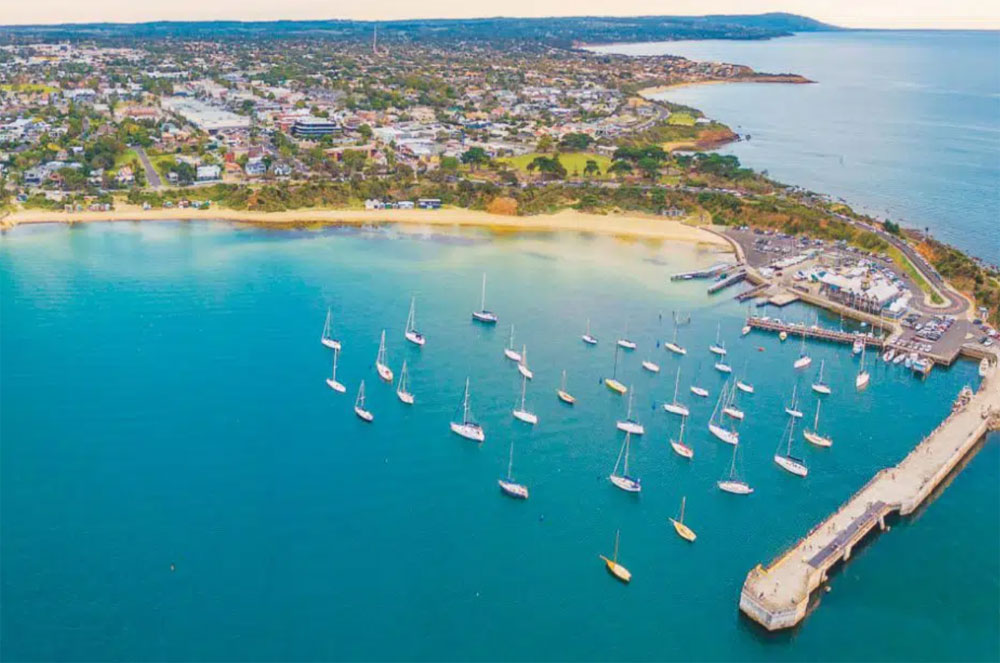
Program Status Update
Open to offshore applicants, the program provides skilled migrants with a pathway to permanent residency in Victoria. The skills that successful applicants bring to Victoria benefits employers and the broader Victorian economy.
The program provides two visa pathways.
The Skilled Nominated visa (subclass 190) is a permanent visa for skilled migrants to live and work anywhere in Victoria. The Skilled Work Regional (Provisional) visa (subclass 491) is for skilled migrants to live and work in regional Victoria and provides a pathway to permanent residency through the Permanent Residence (Skilled Regional) visa (subclass 191).
As with previous years, applicants will first need to submit a Registration of Interest (ROI) and then be selected on competitive merit to apply for visa nomination.
Both onshore and offshore applicants are eligible to submit a Registration of Interest (ROI) for both the subclass 190 and subclass 491 visas.
This is a significant change from the 2021-22 Skilled Migration Program, which did not allow applications from individuals overseas. Additionally, the new program is a great opportunity for applicants who work in a variety of occupations, particularly since the 2021-22 program was previously aimed at applicants in science, technology, engineering, mathematics and medicine (STEMM).
If you submitted a ROI during the 2021-22 program, you must submit a new ROI to be selected to apply for the 2022-23 program.
Your ROI will remain in the system for selection until it is withdrawn, selected or the program year ends.
Before submitting an ROI for Victoria, applicants should check that they meet all eligibility requirements.
For a further explanation, see the Frequently Asked Questions page on the Victoria Government website.
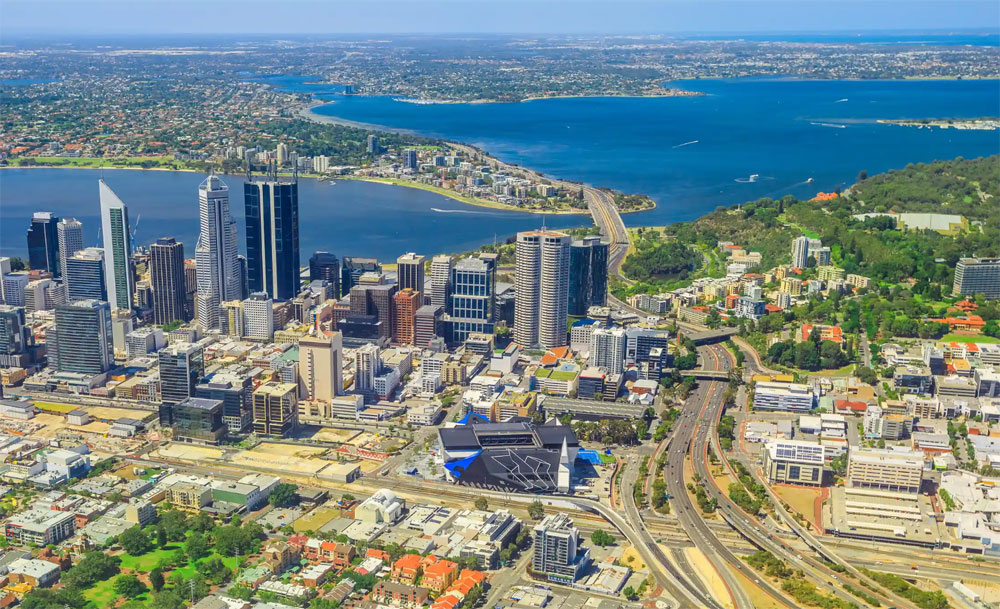
Program Status Update
People residing offshore are now eligible to be considered for Western Australia (WA) State nomination. Invitations to apply for WA State nomination will be via the ranking system.
The Western Australian Skilled Migration Occupation List identifies the occupations in current demand in Western Australia. This List is important if you want to apply for Western Australia nomination for either a:
Please note that to be eligible for an invitation in the WA State Nominated Migration Program, you must meet both:
Before starting your application, you will need to check whether your occupation is available on either the WA Skilled migration occupation list (WASMOL) Schedule 1 or 2, or the Graduate occupation list. You can search for your occupation here. (The occupation list search bar is located under the heading ‘Eligible Occupations’.)
For the 2022-2023 program, the WA Government is temporarily waiving the $200 application fee. Additionally, applicants who apply after this date will no longer need to provide proof of sufficient funds for WA State nomination.
Under the Western Australia Skilled Migration Program 2022-23, the English language requirement has also been reduced for applicants at the Manager and Professional occupation level. Applicants at this level will only need to demonstrate a “competent” proficiency in English (which is a minimum ‘IELTS score of 6’ for each of the 4 categories).
Before submitting an EOI for Western Australia, applicants should check that they meet all eligibility requirements.
For a further explanation, see the Frequently Asked Questions page on the Western Australia Government website.
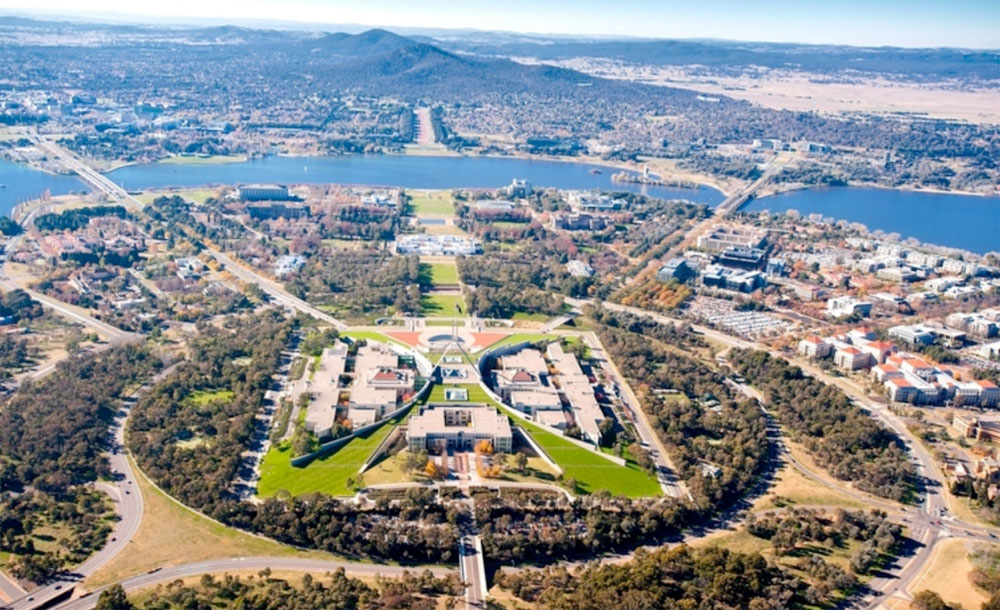
Program Status Update
The ACT Critical Skills List identifies the occupations in current demand in the ACT. This List is important if you want to apply for ACT nomination for either a:
The ACT Government will update this list every four months to make sure that the ACT Skilled Migration Program adapts and responds to the evolving critical skills needs of the ACT economy.
The Canberra Matrix is weighted to ensure that applicants who will make a positive economic contribution to the Territory and/or have demonstrated a genuine commitment to the ACT are more likely to be ranked and invited to apply for ACT nomination.
*ACT nomination does not guarantee a migration outcome. You must still meet the Department of Home Affairs criteria.
Every month, a certain number of nomination invitations are available (prorated on the annual allocation) to those working in the highest ranked Matrix in each occupation.
You can view the ACT’s most in-demand skills for skilled migration by consulting the ACT Critical Skills List.
Before submitting an EOI for The Australian Capital Territory, applicants should check that they meet all eligibility requirements.
Once you’ve submitted a valid Department of Home Affairs Skill Select EOI, follow the ACT Government Process to apply for ACT nomination.
For a further explanation, see the Resources page on the ACT Government website.
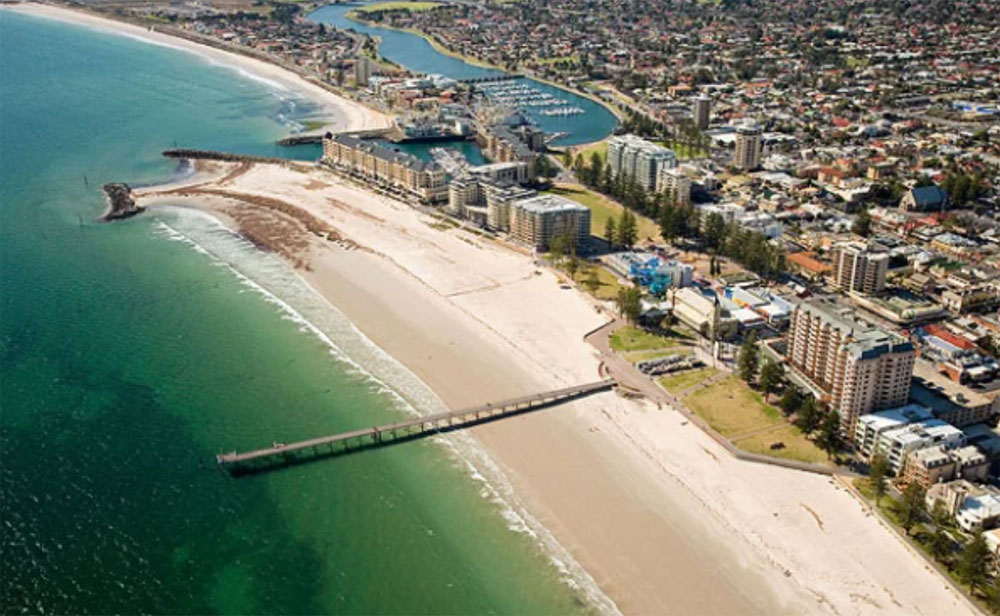
Program Status Update
To manage South Australia’s COVID recovery response, applicants currently residing offshore are able to apply.
Depending on your occupation and situation, there are two state nomination options available for skilled migrants through South Australia.
For South Australian state nomination, prospective applicants must meet the Department of Home Affairs requirements, state-specific occupation requirements and have skills in an occupation that is available on the South Australian Skilled Occupation List. Offshore applicants meeting the minimum published requirements can now lodge an Expression of Interest (EOI).
There is an enormous range of occupations on South Australia’s Skilled Migration Occupation List in a range of industries – search for your occupation here.
South Australia will increase its nominations of offshore skilled migrants in 2022-23. This is in order to make entry to the South Australian labor market faster, due to urgent skills shortages.
To do this, South Australia will select offshore applicants to apply for state nomination from those who have submitted an Expression of Interest (EOI) through Skill Select. Offshore applicants will not need to lodge a Registration of Interest (ROI) for this year’s program. South Australia will be nominating offshore applicants from over 470 occupations on South Australia’s Skilled Migration Occupation List. To be eligible, ensure all the information in your Skill Select EOI is up to date and you have selected South Australia as your first preferred state or territory to move to in Australia.
South Australia will be assessing candidates on merit by the following factors, within their nominated occupation:
Before submitting an EOI for South Australia, applicants should check that they meet all eligibility requirements.
For a further explanation, see the Frequently Asked Questions page on the South Australia Government website.
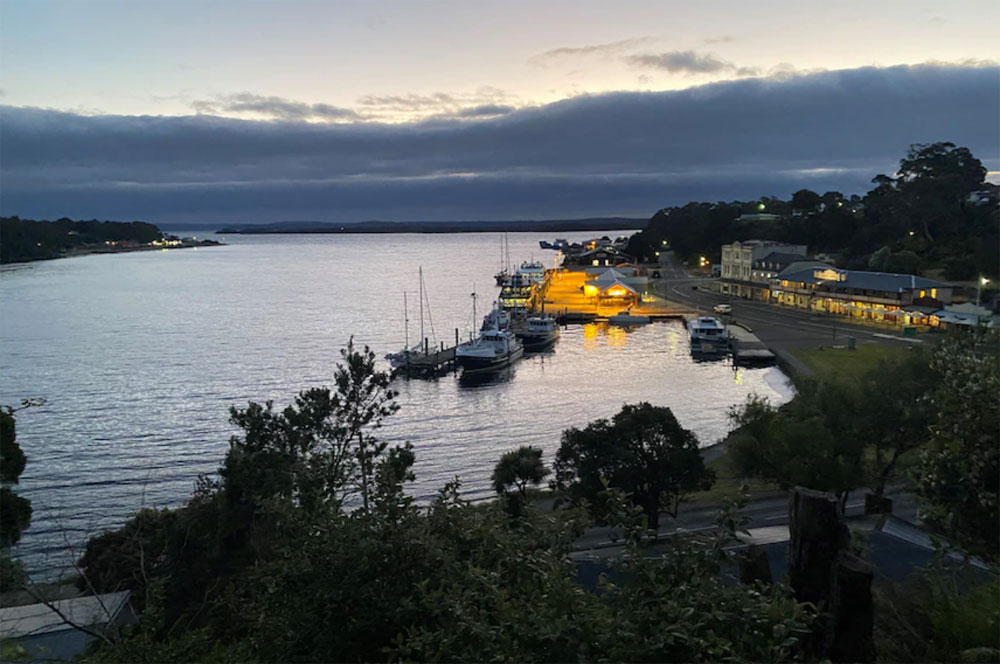
Program Status Update
Working in Tasmania
The two state nomination options available for skilled migrants through Tasmania are:
The Tasmanian State Nomination Skilled Migration Program supports Tasmanian businesses and increases the state’s working age population. It does this by attracting and retaining migrants with skills genuinely in need by employers, or with the capacity to settle in Tasmania through skilled employment in the long-term, and business activities that will increase employment opportunities.
Tasmania’s skilled migration program is for people wanting to move to the state who have skills that Tasmania need. Skilled migrants are attracted to Tasmania because of the state’s enviable lifestyle, career opportunities, affordable housing, reputable schools and a globally recognized university.
The new Migration Tasmania Application Gateway is now available for registrations of interest (ROI) and applications for skilled visa nomination from Tasmania.
Anyone seeking Tasmanian nomination for a Subclass 190 Skilled Nominated Visa or Subclass 491 Skilled Work Regional Visa must first register in the Migration Tasmania Application Gateway .
Before submitting an ROI for Tasmania, applicants should check that they meet all eligibility requirements for either;
For a further explanation, see the Frequently Asked Questions page on the Tasmania Government website.
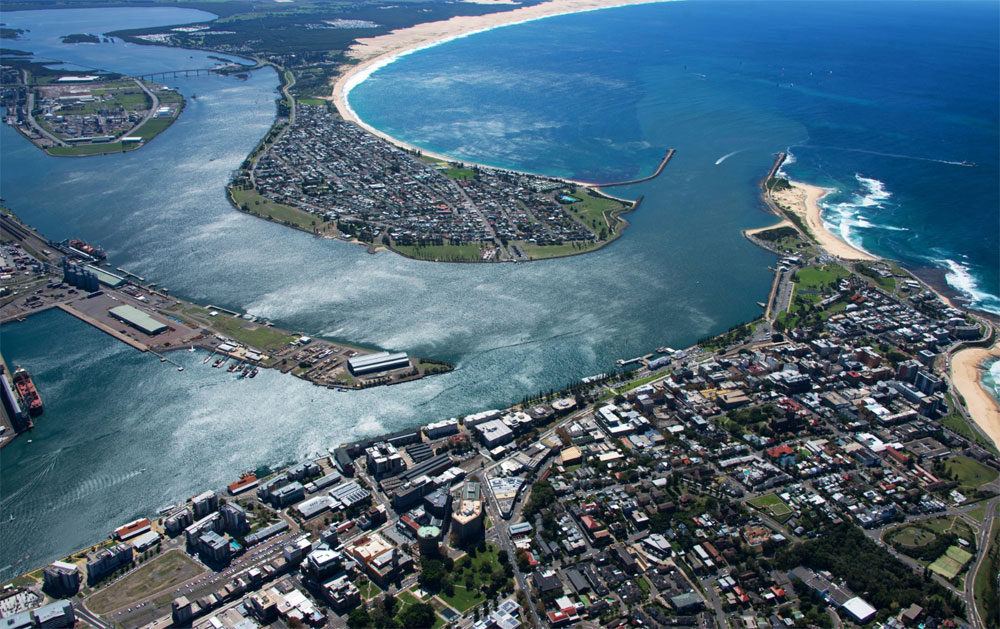
Program Status Update
The New South Wales government has invited applications from offshore migrants under the following nomination streams:
The NSW State Government announced that offshore applicants skilled in certain ANZSCO unit groups are still eligible for NSW nomination.
*Please note: Invitation rounds occur frequently throughout the financial year with no set date.
NSW invites and nominates Skill Select EOIs at the ANZSCO unit group level. To be eligible for NSW nomination (for either Subclass 190 or Subclass 491) you must be skilled in an occupation that both:
It is important to note that not all occupations within ANZSCO unit groups are eligible for the respective visa. It is the responsibility of the prospective migrant to ensure their occupation is eligible for the visa before obtaining a skills assessment.
For the 2022-23 financial year, NSW have introduced a new requirement regarding your Skill select EOI. To be eligible for NSW nomination, your Skillselect EOI must be for ONE visa and for NSW only.
This means that if your Skill select EOI has multiple visas and/or multiple states selected (this includes selecting ‘ANY’), your Skill select EOI will not be considered for NSW nomination.
The skills lists for 2022-23 are available on the Investment NSW website. Additional ANZSCO unit groups will not be added this financial year, however, the skills lists are reviewed annually.
Before submitting an EOI for New South Wales, applicants should check that they meet all eligibility requirements for either;
For a further explanation of how the skills list works, see the Common questions about skilled visas page on the NSW Government website.

If Australia is lurching towards a recession like the one neighbouring New Zealand is now suffering, there were no signs of it on Thursday.
That’s because the labour market continues to buck the economic blues by adding 76,000 jobs in May, according to data just published.
The jobless rate edged down to 3.6 per cent, a move which shattered expectations that an April uptick would continue as the economy slows.
Instead, the robust figures are fuelling fears the RBA will take an even tougher stance on interest rates at meetings in July and August.
“The very strong increase in employment in May and the decline in the unemployment rate … now makes a July rate hike from the RBA more likely than not,” ANZ’s Adam Boyton said.
And while such moves would make a downturn more likely, economists said a surge in migration will help the nation avoid a recession.
The Kiwis, however, aren’t so lucky – figures published across the Tasman on Thursday revealed New Zealand’s economy contracted for the second straight period over the March quarter.
The downturn has been sparked by many of the same pressures facing Australia, including an even worse inflation crisis and bigger rate hikes.
Economist Nicki Hutley said New Zealand’s experience should make the RBA think twice about hiking rates too aggressively in coming months.
She said that with the economy now slowing it wouldn’t take much to tip the scales too far in the wrong direction and cause many job losses.
“It’s a cautionary tale for the RBA not to go too hard, too fast,” Ms Hutley said.
“New Zealand were several months ahead of us with their initial tightening – it just shows you what can happen.
“That’s the big question we’re all dealing with – what is the risk you’re prepared to take on the growth side to get inflation under control?”
Jobs surprise
The May jobs data surprised economists because most had expected the jobless rate to inch upwards – as it did in April – on the back of clear signs the economy is slowing down rapidly.
But BIS Oxford Economics Australia head of macro-economic forecasting Sean Langcake said the other shoe hasn’t fallen on the jobs market just yet, with the April increase proving to be a “false dawn”.
“The labour market remains in an incredibly tight position,” he said.
“The conventional wisdom is it’s not sustainable to keep the unemployment rate at around 3.6 per cent and have inflation at target.”
Commonwealth Bank chief economist Gareth Aird said there were signs in May that the jobs market is “loosening”, including a lift in underemployment and a drop in hours worked.
But it’s not happening in the traditional way, which would be through a rise in the jobless rate.
“It is loosening via more workers looking for extra hours,” he said.
“In time the unemployment rate will lift given below‑trend economic growth. But it is simply just taking more time than would be expected given the slowdown in the economy.”
Downturn risks
Most major forecasters are now predicting at least one more rate hike in either July or August that would take the RBA’s target from the current 4.1 per cent to 4.3 per cent.
Some are even predicting rates will reach 4.6 per cent within two months, a reality that would add more than $150 to typical monthly mortgage repayments.
National Australia Bank chief economist Alan Oster thinks such moves will take Australia perilously close to an economic contraction, with GDP slated to rise just 0.5 per cent in 2023.
But despite the growing risk of a downturn in 2023, Mr Langcake says Australia should avoid a contraction in growth because the population has started growing rapidly.
“We have an assumption now of even tighter monetary policy … that takes a bit out of growth and gets you closer to going backwards,” Mr Langcake said.
“But immigration is what these conversations come back to … having this many people coming into the country boosts consumption, services, exports.”

Rohit Singh speaks in an accent that’s markedly different from his mother’s.
He’s a second-generation Indian immigrant living in Mornington Peninsula, a beachy cape that’s about an hour’s drive from Melbourne.
Over the past two years, he has been helping his parents run Avani, a boutique winery they founded after migrating to Australia in the 1990s.
Mr Singh says that in the past decade, the South Asian community in Melbourne has burgeoned, so Avani has started hosting wine pairing events that spotlight Indian dishes – meen pollichathu (a baked fish recipe from southern India) is served with Pinot Gris; dal makhani (a slow-cooked, creamy black lentil dish) is paired with a Pinot Noir.
The chefs and restaurateurs behind these experiments are among more than 710,000 Indians who live in Australia, one of the world’s biggest “immigrant nations”. Their numbers have been increasing rapidly over the past few years – according to the country’s last census, Indians are now the second-largest migrant group in Australia, having overtaken the Chinese and second only to the English. The new wave of Indian immigrants has largely been driven by the tech sector, as the country has a high demand for skilled workers.
Aarti Betigeri, a journalist who is currently editing an anthology on the experiences of Indians growing up in Australia, says that when her parents moved there in the 1960s, Indians were hardly a part of public life. “It was rare to find another Indian on the street,” she says.
Today, things are different. “They’re in jobs across sectors, run their own businesses and are even entering politics,” she says.
The recently-elected New South Wales government has four Indian-origin politicians, including Daniel Mookhey, who in March became the first politician of Indian origin to become the treasurer of an Australian state. There is still a long way to go, though – Indian-Australians, along with others with a non-European lineage, are still underrepresented in politics, especially at the federal level.
Ms Betigeri says that soft power exports have played a powerful role in uniting the two countries. At a recent rally in Sydney – which was attended by thousands from the Indian diaspora – Indian Prime Minister Narendra Modi spoke about how the TV show MasterChef Australia, cricket and films were bringing people together.
Experts say that his Bharatiya Janata Party (BJP) government, which has been in power in India since 2014, has played a key role in strengthening bilateral ties. Mr Modi’s visit to Australia in November 2014 was the first by an Indian prime minister in nearly three decades.
During his recent visit to Sydney in May, the two countries announced a migration deal to make it easier for students, academics and professionals to travel and work in India and Australia. They also restated their commitment to concluding a comprehensive economic co-operation deal – which is set to build on the outcomes of an agreement signed last April.
In March, Australian Prime Minister Anthony Albanese paid his first official visit to India since entering office, and the two prime ministers discussed defence and security, economic co-operation, education and bilateral trade.
“The frequent meeting of the prime ministers and ministers has deepened bilateral ties that was not seen in earlier days,” says Pradeep S Mehta, who works at CUTS International, a global public policy research and advocacy group.
Observers say that this partnership is being seen as beneficial to both nations, who are also part of the four-member Quad grouping aimed at constraining China’s dominance in the Indo-Pacific region.
While the connection between India and Australia dates back millions of years – a supercontinent called Gondwana once physically connected the two present-day nations – the history of Indians migrating to the country is far more chequered. Early immigrants arrived in Australia in the 1800s as labourers or servants of British subjects moving from India.
In the 1900s, a broader range of Indians began migrating and their numbers significantly increased.
The real game-changer came in 2006, when the John Howard-led government opened Australia’s doors to Indian students and introduced policy measures that made it easier for them to get permanent residency.
“Indian students still form a very large part of temporary migrants. After they get their degrees, many of them are allowed to settle in Australia,” Mr Bapat says.
Immigrants from Asian and South Asian countries bring much-needed multiculturalism to Australian society and have helped the economy grow.
Some from the Indian community say that they are trying to make Australia more inclusive by educating people about their culture and heritage.
Divya Saxena, 24, who has grown up in Sydney, wants to make Indian classical dances like Kathak and Bharatnatyam more mainstream in Australia.
She says that Sydney has a flourishing community of Indian-Australian creatives like her who are striving to “break stereotypes” around the South Asian community and support each other’s businesses.
Ms Saxena recently choreographed a dance routine for Rowi Singh, an Indian-Australian makeup influencer who creates vibrant looks inspired by her South Asian heritage.
“We’re free to pursue our passions, and many of us are trying to make Australia an even more welcoming place for future generations,” Ms Saxena says.
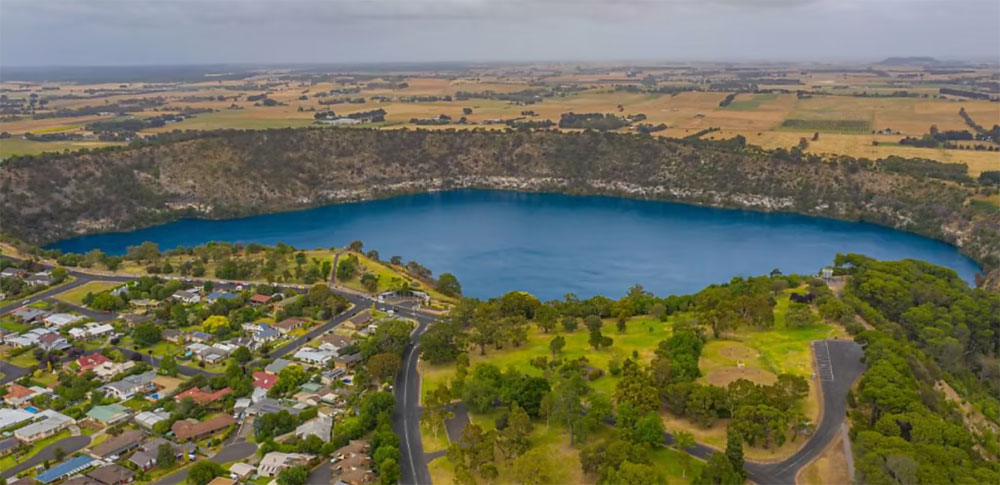
Hugging the border between South Australia and Victoria, the region has been one of the most highly sought-after destinations for internal migration in the last few years, and now investors are beginning to ride the Mount Gambier wave.
The South Australian region’s population could grow even more over the coming years, given the region was recently spotlighted by Smart Property Investment’s Fast 50 ranking for 2024, which launched last month, as one of the nation’s most promising investment markets.
The report and ranking combined the insights of a 14-strong investment expert panel and recent housing performance drawn from open-source data, and it aims to give unparalleled insight into the Australian suburbs that are set for future growth.
Mount Gambier is one of 10 South Australian markets listed within the report, with the region billed as one of the most affordable, and highly prosperous, markets across its state. Despite recent reports indicating the average South Australian home has ticked over to $600,000 — the record median price within the state — Mount Gambier offers investors an affordable slice of the state’s property market, with home prices in the suburb approximately $375,000 at the beginning of this year.
This is despite prices across the region booming 25 per cent in the 12 months to January 2023.
South Australia’s second-largest town, nestled on the edge of a dormant volcano, lies in the heart of the state’s Limestone Coast, a region widely celebrated for its effervescent natural beauty and world-class wine.
Notorious for striking the perfect balance between vibrant city living and quaint regional town comforts, the region is also widely popular with tourists, who flock to Mount Gambier because of how it effortlessly blends the sea and tree change that has become increasingly desired since the onset of the COVID-19 pandemic.
Notable for investors, the region’s employment market is underpinned by a strong forestry industry, as well as a $120 million renewable energy plant, while a $70 million expansion of the local hospital has been floated.
Mount Gambier was recently named by InvestorKit as one of the “five South Australian markets set to outperform in 2023”.
Further boosting the region’s standing in the eyes of investors is its tertiary education offerings, with the University of South Australia’s campus on the town’s northern rim increasing its attractiveness to students and education professionals, as well as hospital and healthcare professionals, all of which ensures the region’s already sturdy rental demand will remain moving forward.
Data from the Regional Australia Institute (RAI) from mid-last year celebrated Mount Gambier as being “perfectly positioned between Adelaide and Melbourne with wonderful amenities and work opportunities in a diverse range of industries, including manufacturing, agriculture, civil construction, and wholesale retail”.
According to the South Australian government, Mount Gambier can brace for steady population growth for years to come, with this ratified by recent data from the Regional Australia Institute highlighting one in five Australians are dreaming of a regional shift.
RAI’s chief executive officer, Liz Ritchie, stated Australia’s regional hubs are “ready to welcome city folk with open arms”.
“There’s never been a better time to move to more,” she concluded.
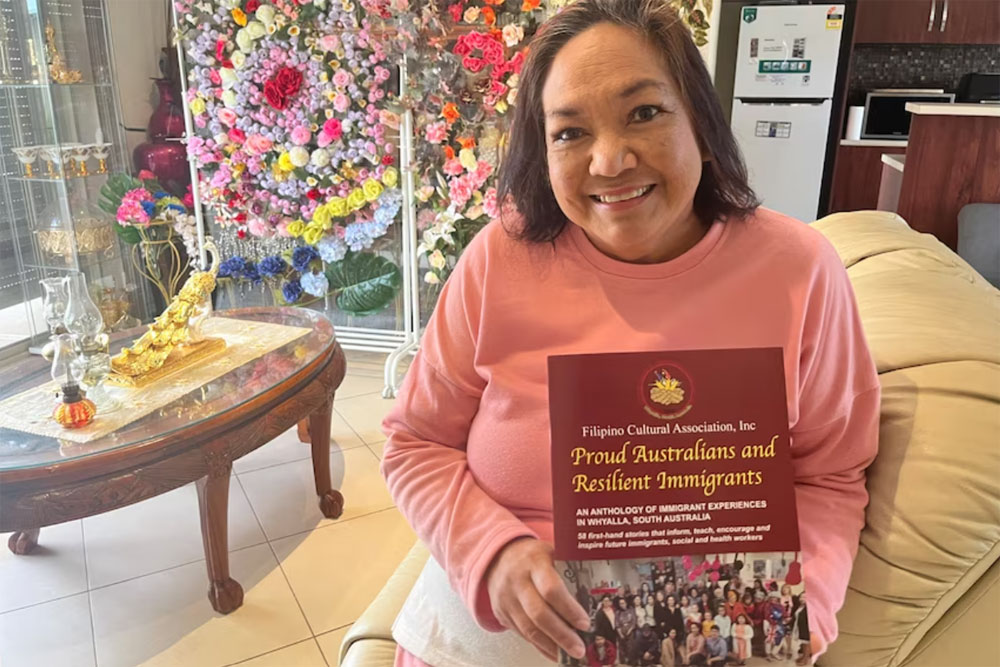
Joy Penman says the book is aimed at giving new immigrants advice on settling in Australia.
Dozens of Filipino Australians are telling their stories to help other immigrants settle in regional Australia.
Whyalla’s Filipino Cultural Association has published a book containing 58 stories from immigrants about their experiences moving to Australia and some of the challenges they overcame.
Association chair Joy Penman said the book would help immigrants settle in Whyalla and would also guide politicians on how to help immigrants.
“We’re very proud of this achievement,” Dr Penman said.
“This will help not only the new immigrants, [but also] the health providers, the stakeholders and the policymakers because they will understand what works and what doesn’t for immigrants.”
Dr Penman said politicians could help immigrants by making language education more accessible.
“It’s so important we have this infrastructure for immigrants to be assisted for example the availability of English classes,” she said.
The association is launching the book to coincide with the Philippines’ Independence Day, which marks the day Filipino rebels declared the independence of the Philippines from Spanish rule in 1898.
“This marks years, hundreds of years of colonisation under the Spanish, the Japanese and later the Americans,” Dr Penman said.
“We want to recall all our heroes, all those who laid their lives, who made the ultimate sacrifice to bring us our freedom.”

The release of TV’s Ten Pound Poms coincides with a particularly contentious period in Britain’s political stance regarding immigration. Britons’ post-war exodus Down Under, although not directly comparable to current immigration policies, does give us pause for thought. Freedom of movement enables opportunity.
Forced to close her ports during World War II, Australia found herself with something of a population crisis when the conflict ended. The result was the introduction the 1945 Populate or Perish policy, aimed at encouraging a fresh supply of workers for the nation’s booming industries. The Assisted Passage Migration Scheme – colloquially known as Ten Pound Poms – formed part of this policy and was, two years later, mimicked by the Government of New Zealand.
Consequently, between 1945 and 1972 over a million Brits took advantage of the opportunity. Numbers increased further in 1957, following the Bring out a Briton campaign. For a mere £10 (the current equivalent is about £350) migrants received a six-week passage to their new home, where they could expect employment openings, affordable housing, and – of course – permanent sunshine. In return, all migrants had to do was pledge to stay in the country for a minimum of two years.
Many settlers then went on to make a success of their new lives. Australia’s first female Prime Minister, Julia Gillard, left the Welsh seaside town of Barry in 1968 with her parents, John and Moira. She followed in the footsteps of London-born Prime Minister Tony Abbott, who’d landed on Aussie shores with his native Australian mother six years earlier.
And today, from the advantageous perspective that history affords, we can see how talented individuals were able to make their mark in the entertainment world. Whether they would have found similar success in their homeland is impossible to say. The point is: they didn’t.
Through grasping the opportunities available, future success stories exploited what Australia offered. They got a return on the promise they made to their new country. And, over, the years, migrants have enriched the cultural landscape of this vast nation in terms of diversification, fresh voices, and talent.
If this enrichment is in any doubt, some key figures serve as compelling examples. In 1958, Australia claimed the Gibb brothers – better known as the Bee Gees – from the Isle of Man. Three years earlier, the future mother of Kylie and Dannii Minogue made Australia her new home, hailing from Wales. Subsequently – or perhaps consequently – her daughters grew up in a world that made exponential stardom possible. In 1963, two Scottish brothers, 8-year-old Angus and 10-year-old Malcom, swapped rainy Glasgow for sun-drenched Oz. Within two decades they’d ‘made it’ – as AC/DC. And Hugh Jackman, internationally-renowned actor, was born in Australia, having arrived in the country while still in his mother’s womb. Another Ten Pound Pom, Hazel Phillips, was awarded the Order of Australia Medal in the 2005 Queen’s Honours List for her services to entertainment, particularly in the realm of performing arts and television.
But the entertainment history of these two inextricably linked countries is not all one-way. Take the late, great Barry Humphries (perhaps much better known as Dame Edna Everage), who became famous the world over for his inimitable stage shows. Although he was not a Ten Pound Pom – the Melbourne-born entertainer was Australian through and through – he was part of the generation who took his talent in the other direction, and was often found in London (‘Kangaroo Court’, as Earls Court became known, so packed it was with Australians). His unique Australian identity was always warmly received in the UK, and must surely have gone some way to promoting the reciprocal relationship between the two cultures. Likewise, the Australian John Bell, co-founder of Bell Shakespeare Company, trained at Bristol Old Vic Theatre School and joined the Royal Shakespeare Company. These influences must have been of some influence on his return to Australia. In other words, the cultural relationship between Australia and the UK is a mutually beneficial one, and one with a great deal of history.
So, when it comes down to freedom of movement, one must consider not only what it costs but what the rewards are.
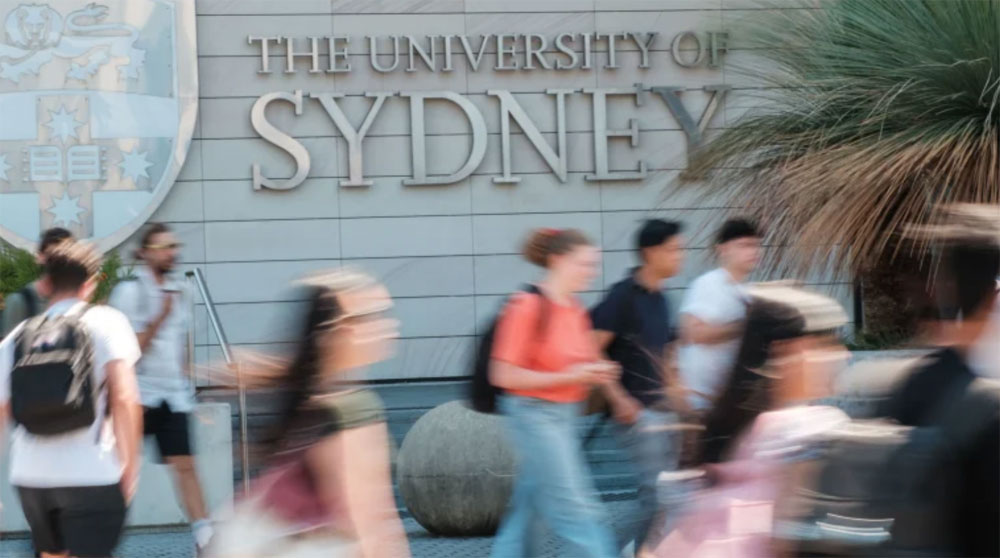
The Australian government is looking to enact wide-ranging changes this academic year to put a stop to unscrupulous agent behaviour and non-genuine students switching courses aided by onshore agents, according to an Education department representative.
It is also considering amendments to written agreements between students and institutions and the ESOS National Code, which is likely to see changes as a result of the upcoming migration review.
Acting assistant secretary of the International Quality Branch in the Education Department’s International Division, Alison Cleary, outlined amendments the government is considering regarding international students at an event this week.
Connecting student visas with institutions and English language proficiency are live discussions within the department. “Rogue or inappropriate” agent behaviour and possible changes to written agreements with international students are areas where officials are keeping a close eye and consulting with the sector to decide on the next best steps forward.
While decisions have not been made and consultations are continuing, government hopes and expects to introduce one complete raft of changes in this calendar year.
“With regard to education agents, we’re aware that this is an area of enduring concern in the sector where they might be a possibility for education agents to be acting outside of the requirement to act ethically in the best interests of the student,” Cleary said.
“There’s also a general concern that high commissions and the market power wielded by agents are having the potential to distort the way that the market for international students is operating, and that’s creating some concern amongst the sector and among students. If these behaviours are left unchecked, they have the potential to damage the sector and the reputation of the sector.”
The department is looking to “put some downward pressure” on agent commissions.
However, she noted that “it is a quite a tricky matter” to regulate offshore agents.
“Whilst we understand the notion of a fully regulated model, it’s really challenging to actually do in practice. So we’re looking at how else we can manage some of the risks that rogue or inappropriate agent behaviour might create.”
Cleary said that in the context of the upcoming migration review, the government is considering how student visas operate. There have been concerns that the current system allows students to switch institutions while onshore, which in-country agents have been taking advantage of, as previously reported by The PIE.
Concurrent study, when students enrol in more than one course, is also being used as an option by some non-genuine actors, she said.
“[But] when we’re thinking about these issues, we do also think about the right of the student as a consumer to have some choice in how they might transfer. There are places in which a transfer is a legitimate consumer choice,” she noted.
“We’re looking at a range of different market based approaches that are intended to increase transparency”
“It’s all about getting those considerations right and coming up with a balance that matches needs,” she said, adding that any changes will be designed to be “easily digestible” by the sector.
The process must be consistent with Australian consumer law and competition policy, she continued.
There are concerns about unintended consequences of caps on commissions and that it could “push commissions underground”.
“We’re looking at a range of different market based approaches that are intended to increase transparency… We think there may be other measures that might be more effective and perhaps less of a regulatory impost than doing something like a hard cap.”
Confidentiality requirements around agent performance could impact transparency, but “we do think that an increase in transparency is going to be part of what we’re looking at going forward”, she suggested.
On subagents, the department is aware that subagents exist but it is focusing on the behaviours of the last entity in the recruitment chain i.e. the body, entity, organisation, person, business that brought the student to the provider, she said.
Under the migration review, announced by Minister O’Neill on April 27, a major body of work between departments of Home Affairs, education and employment is expected.
Via PRISMS the department can see how institutions are assessing students’ English language proficiency, but Cleary acknowledged that proficiency in English is key for student workforce and employability outcomes, especially with regards to international students being a “major feeder group for Australia’s permanent migration strategy”.
In November of last year, a report from the Commonwealth Ombudsman’s office suggested that written agreements, that international students must sign to enrol at Australian education providers, appeared “unfair and unreasonable” in some cases during the pandemic.
“[Written agreements] are really a tangible demonstration of our reputation, our commitment to fairness and providing a really good student experience,” she said.
While the National Code already provides requirements around how those agreements are structured, the Ombudsman “particularly noticed” that students do not have much opportunity to negotiate the contracts – therefore they need to be considered under standard contract terms, which will impact on Australian consumer law with regards to responsibilities and obligations of both parties.
“The department is considering options and asking for views about how we can once again get that balance right between responsibilities and obligations for both parties while making sure that we’re meeting our obligations on consumer law and putting our best foot forward in terms of our reputation with our students,” she explained.
One option is introducing non-mandatory model clauses – which would mean convening a separate consultative process – to “make clear or provide guidance and support” provider to ensure agreements will meet all obligations and aspirations for the documents.
Another issue being considered is around aligning Tuition Protection Service refund operations between international and domestic students more closely. In April 2022, TPS was rated “a suitable tuition protection mechanism for international education” in a Nous report.
“There is a broader discussion around how refunds are managed vis a vis written agreements and so forth. These are going to be, I think, relatively small technical amendments that we’d be looking at, and they’d probably be fed into a broader process of looking at refunds,” Cleary said.
“There is a broader discussion around how refunds are managed”
In a ABC RN Breakfast interview earlier this week, education minister Jason Clare noted that the March agreement with India on mutual recognition of university qualifications will “make it easier for students in both of our countries to study in each other’s country”. An agreement between prime ministers Narendra Modi and Anthony Albanese will “build on that”, he indicated.
Minister for Home Affairs, Clare O’Neil, Skills minister, Brendan O’Connor, and Clare are “looking at the reforms we need to take here to ensure the integrity of the system”, he concluded.

We’ve all asked our friends, our idols and Google how to become rich fast.
We all want financial stability — the sooner, the better.
Financial stability is the adult equivalent of finally completing your collection of Pokemon cards in mint condition after saving your pocket money and trading with your friends for years.
If that reference is too dated for you, think of the satisfaction you get from keeping up your Snapchat streak, watching that number rise and rise.
Or that feeling when you finally complete the hardest level of a video game, that uninhibited euphoria from achieving a seemingly impossible goal.
You want to keep that success going — regularly and without unexpected changes. That’s what being financially stable is all about.
And in today’s world, getting there is a matter of how to become rich, ideally within a reasonable number of years after graduating.
How we look at and achieve this will differ between you and me. For some, it’s about making your first million dollars or creating enough wealth for your children and grandchildren.
For others, being financially stable is knowing how to become rich enough to pay for your parents’ medical bills, your younger sister’s college fees and your future children’s childcare.
No matter which group you belong to, the right degree can certainly help you hit your money goals.
How to become rich and stay that way
How to become rich is only one part of the equation.
While the right degree can put you on the right path towards your wealth goals, maintaining it is a whole other ball game.
A good way of staying rich is to have little debt — and that includes minimal student loan debt.
So first, you must consider how much you can spend for your degree and if it might put you in debt.
While not all debt is bad, it is important to keep to a budget that best suits your wallet. Try searching for similar degrees at another university — they may have lower tuition or offer financial aid.
Sort this out and you’re taken a big step in the journey of how to become rich within 10 years. Then, you can tackle other key steps.
According to Investopedia, there are 12 “habits” which can help you reach financial freedom. These habits include:
These steps may sound simple enough, but in practice, they can get quite tricky.
For instance, sticking to a budget can be hard, especially when you have people depending on you or other responsibilities.
Accidents, which are usually costly, can happen (though insurance could possibly help you curb that).
Getting an advisor sounds like a solution, but it can often be a pricey service and finding a qualified person who you can trust with your money is a journey.
Ultimately, the answer to how to become rich is to make wise choices — and the first step to that is to choose the right degree.
How to become rich? Start with one of these 10 degrees that’ll make you financially stable in 10 years
How much you need to make to be financially stable will depend on your money goals. A basic rule by experts is to divide your earnings as follows:
The right degree can set you up for a high-paying job that makes this possible.
But a degree with transferable skills that will see you through the next 10 years is perhaps better in the long run.
1. Master of Business Administration
An MBA can provide a big boost in your journey to a fuller bank account. In 2022, 17 business schools reported average annual salaries of US$147,648, up $12,550 or 9.3%, among their MBA graduates.
Stanford MBA graduates reported a base salary average of US$182,272, according to Poets & Quants.
As an MBA provides one with a deep understanding of business management, strategic thinking, and decision-making skills, it can open the door to lucrative opportunities in various sectors, including finance, consulting, and entrepreneurship.
Paired with hard work, this degree is one of the more common answers to how to become rich as it’s often a requirement to snatch high-level roles such as company CEO or even be the building blocks of the next unicorn start-up.
It can be a powerful tool to do business for good or work in another country too.
2. Economics
Graduates with this degree possess a solid understanding of economic principles, market dynamics, and data analysis.
They also have critical thinking and problem-solving skills, enabling them to make informed money decisions and identify profitable opportunities.
This knowledge can be applied in various industries, including finance, banking, consulting, and government — and lead to roles that pay an average of US$128,180 per year.
3. Computer Science
Those with a Bachelor of Computer Science degree possess in-demand technical skills and knowledge of programming, software development, and problem-solving.
This opens doors to many career opportunities in fields like software engineering, data analysis, cybersecurity, and artificial intelligence — which are booming as the world embraces everything digital.
In the US, the 2021 median salary for an information security analyst is US$102,600, which is expected to grow by 35% in the next eight years.
Whereas a data scientist’s median salary in 2021 is US$100,910, projected to grow by 35.8%. Both of jobs require a degree in computer science.
Coupled with dedication, continuous learning, and entrepreneurial spirit, this degree can lead to stability and wealth.
4. Civil engineering
Civil engineers are essential in designing and overseeing the construction of infrastructure projects, such as roads, bridges, and buildings.
This field offers ample opportunities for high-paying jobs (around US$88,050 per year in 2021) — especially in sectors like construction, transportation, and urban planning.
Civil engineers who excel in their careers can advance to managerial positions, leading to increased earning potential.
Some engineering graduates end up changing to other industries (regardless of the type of engineering), which is possible because of the many transferable skills you gain.
In the long run, most engineering degrees will stand the test of time because of this.
5. Aerospace engineering
There is still so much about space and the universe that we do not know, and as such, an exploration of this field will certainly carry on for the next 10 or even 20 years.
Graduates with this degree possess specialised knowledge in areas like aerodynamics, propulsion systems, and structural analysis.
This expertise allows them to work on complex projects and contribute to technological advancements.
According to the US Bureau of Labour Statistics (BLS), there were 61,400 jobs in this field as of 2020.
This number is expected to grow 8% annually over the next decade. They predict that around 5,100 jobs will be added in the next decade.
6. Nursing
The healthcare industry is consistently in demand, and nursing offers many opportunities for career growth and a healthier bank account.
Those with experience and specialised certifications can expect to be well-paid for a long time. Plus, part-time or freelance work can provide additional income.
In the US, a certified registered nurse anaesthetist can earn up to US$195,610, and a general nurse practitioner can make US$120,680.
In 2021, the Royal College of Nursing estimated that the average annual salary of an NHS nurse is 33,384 pounds.
The 2023 pay rise has shifted this average to about 37,000 pounds.
7. Supply chain management
Supply chain management professionals are crucial in optimising the flow of goods and services, reducing costs, and enhancing organisational efficiency.
With this degree, individuals gain expertise in logistics, procurement, inventory management, and strategic planning.
Companies across industries rely on supply chain professionals to streamline operations, reduce waste, and increase profitability — and are willing to pay well for them.
The average salary for a supply chain manager in the US is between US$107,100 and US$137,255.
If you’re looking for a quicker and less costly way to get qualified, take up certificate programmes or professional designations. They’re much cheaper than a full-blown degree.
8. Finance
With a strong foundation in financial theory, investment analysis, and risk management, finance graduates possess the knowledge and skills to make informed financial decisions.
Graduates with this degree will not only know how to make money but also have an insight into how to grow it and make it work for them. You would essentially have the cheat sheet for how to become rich.
This degree opens doors to careers in investment banking, corporate finance, financial planning, or consulting — traditionally known for offering some of the highest salaries to graduates.
The best part? Performance-based bonuses are a norm, as well as rapid career advancement. A new consultant with a graduate degree can typically make US$150,000 to $200,000, including bonus, at a top firm.
9. Computer programming
As technology continues to advance, the demand for skilled programmers remains consistently high.
Learning programming languages and gaining proficiency in software development opens up numerous opportunities in sectors like technology, software engineering, web development, and data analysis.
Skilled programmers often enjoy competitive salaries, and with experience and expertise, they can command even higher pay.
How to become rich with a computer programming degree when there are so many tech layoffs?
By continuously learning and adapting to emerging technologies, individuals with programming skills.
Look to larger companies like IBM and keep up-to-date with the latest information.
You can also look for cheaper alternatives for your degree, like free certifications and online courses.
10. Architecture
This degree choice might be the underdog on our list, but hear us out.
Architects design the structures we inhabit and play a pivotal role in designing and overseeing construction projects. For this reason, their expertise is highly valued.
From high-rise apartments to luxury hotels to stoic government buildings, they’re needed in all aspects of the built environment.
With experience and a strong portfolio, architects can command higher fees or establish their own successful practices.
Architecture is a difficult degree, and the job market is very competitive. This might deter you, but it is possible that architecture is the answer to how to become rich.
There is also the environment to consider, and you can specialise in tackling climate change with out-of-the-box designs and rethinking how cities function.
Getting rich with this degree is possible if you are open to pivoting.
Pat Flynn did just that when he lost his job at an architecture firm. He began a blog to help budding architects pass the crucial LEED Professional Exams, which certify that an architect has the necessary chops.
Flynn is now a millionaire.




There was loads of family fun celebrations highlighting the significance and beauty of the sea surrounding Christmas Island! Christmas Island, Western Australia. June 2023


Celebrating the southern hemisphere’s winter solstice, there was once again loads of art, music, fire, food, light and noise at this years Dark Mofo Festival! Hobart, Tasmania. June 2023

The Fire was lit, the stills were full and the vintage was in the barrel as we heard first hand the stories of Kangaroo Island’s beverage making bravery and resilience! Kangaroo Island, South Australia. June 2023

It was an authentic Aboriginal cultural experience at the Barunga Festival with traditional dance and music performances, art exhibitions, cultural talks, traditional sports, story telling and bush medicine workshops! Barunga, Northern Territory. June 2023

It was a fantastic day out with friends to wander through the ‘Good Food and Wine Show Sydney’, sampling from hundreds of stalls, chatting to winemakers and joining a ‘wine and cheese pairing’ or ‘whisky tasting’ masterclass! Sydney NSW. June 2023


This tiny species of possum grow no longer than 8cm and aren’t camera shy!! Torndirrup National Park, WA. June 2023

This Bulletin and its contents is for general information purposes only and should not be used as a substitute for consultation with professional advisors.
As legislation and travel requirements are constantly changing, we strongly recommend obtaining advice on your individual situation from a Registered Migration Agent. Please click here to book a consultation with one of our Registered Australian Migration Agents, located in Australia.






You can manage your membership and billing method by clicking here
Terms of Service
Privacy Policy
Copyright © 2024 Office of Immigration Australia, a private company registered in Australia. All Rights Reserved.